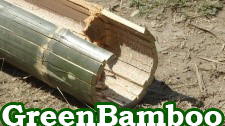

Pictures taken after Super-cyclone Amphan hit the southern part of West Bengal in 2020
1. Helplessness in the rural community, especially in cyclone and flood prone areas when a natural disaster strikes.
2. Rural cyclone and flood prone areas submerged in water.
3. People never get out of the cycle of their houses getting damaged and rebuilding a bad house until the arrival of the next disaster.
4. The support from government schemes does not reach most of the people.
5. Whatever house they make are inundated during floods.
6. These houses are re-build using materials that are quickly available post disaster, they do not last long. So, the ‘life-time’ cost is rather high.
7. Conventional housing schemes do not offer any such housing solution that suits flood and cyclone-prone areas.
8. Added transportation costs of hardware and bricks due to the remote venues for masonry constructions.
9. High plinth to avoid incoming flood water resulting in higher foundation and construction costs which is not considered in the PMAY funds.
10. The minimum funds provided under the scheme is too low for incorporating all the specified NBC and factor of safety codes required to be put into the design of a house in a cyclone-prone area falling under zone 2.
11. Widespread use of industrial materials, that are non-renewable and not bio-degradable.
12. Dumping of these materials onto rivers and farmlands, leading to degradation of the natural ecosystem, affecting the well-being of the rural community.
SOLUTION:
To develop and disseminate construction method of disaster-resistant, elegant and sustainable bamboo house in rural and semi-urban areas, especially suited for cyclone and flood prone areas and a new alternative design for a house that can be built under national housing schemes in disaster prone areas.
1. Reduce individual & national financial loss from disasters by minimizing post-disaster re- construction.
2. Develop a rural and semi-urban engineered house using bamboo as the principle raw material.
3. The house must be economical to cater to the capacity of the rural community.
4. Revive and add to the local knowledge and skill building of the rural community
5. Promote productive rural employment in house-building trade & bamboo cultivation.
6. Built on stilts to allow free flow of flood water below and provide damp-free floor to the residents. Additionally, it will offer space for commercial and storage purposes below the house, during dry seasons.
7. The basic convenience of living in masonry house is to be provided in the new designed bamboo house, such as, concrete floors, finished surfaces etc.
8. The bamboos must be treated with a replicable, standardized process, to provide adequate long-life (up to approx. 50 years).
9. Training rural artisans to disseminate the construction methods, train architects and builders and other professionals to circulate the technology and provide technical support of design and construction for private clients.

